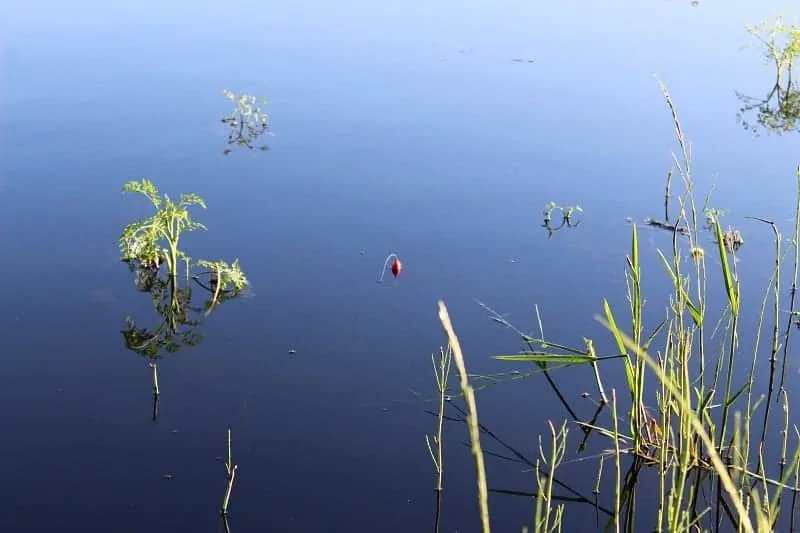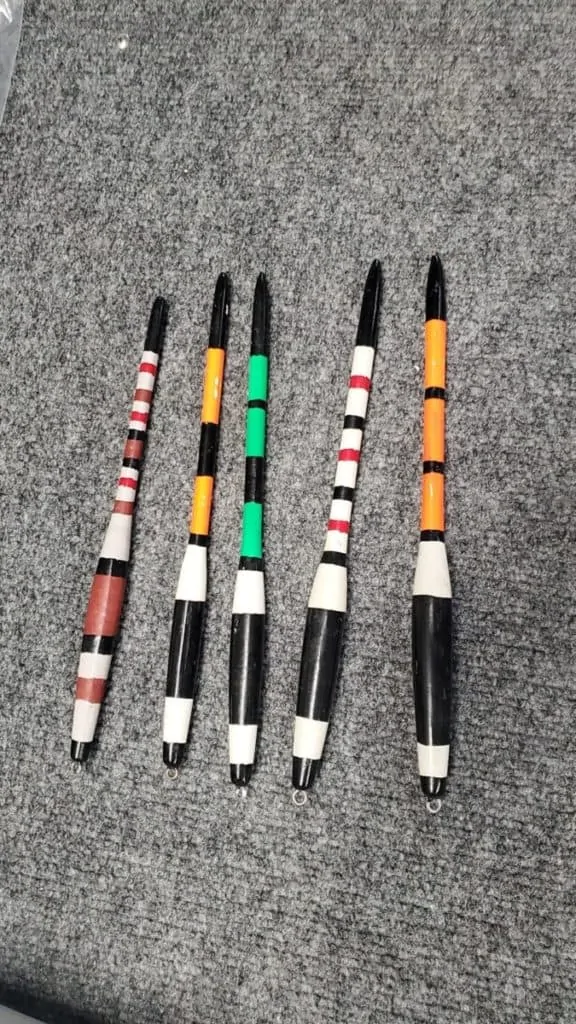Fishing with bobbers is a highly effective way of catching fish, but conventional fixed bobbers have their limitations.
If you instead fish with a slip bobber, you can effortlessly adapt your fishing to any given water, depth or distance, and catch far more fish than you would have otherwise.
Slip bobbers are very versatile floats and are almost always a better choice than fixed bobbers. As they can slide up and down your line, they can be fished at any given depth. So, fishing in deeper water would definitely call for a slip bobber.
Keep reading this article, for the best tips and practical examples of when to use a slip bobber.
When Should You Fish With a Slip Bobber?
Slip bobbers are extremely versatile floats that will do a far better job than fixed bobbers in most circumstances. So, while you could generally almost always use a slip bobber for your bobber fishing, there are a few situations in which fishing with a slip bobber is especially advantageous.
Fishing in Deeper Water
Depth regulation is the greatest strength of the slip bobber, as it can be fished in any given depth, thanks to its sliding capacity.
If you would want to fish for crappie or walleye, which are species that are often found in greater depths and closer to the bottom, fishing with a slip bobber allows you to reach those depths, and hence, present the bait exactly where the fish are.
All you have to do is to slide the bobber stop up your line until you reach your target depth. The length between your hook and the stop should be exactly the same as your desired fishing depth.
Once your rig hits the water, your hookbait or lure will start to sink to the set depth, pulling the line through your bobber until it hits that bobber stop.
So, no matter if you want to fish 6 or 60 feet under the surface, the slip bobber will allow you to do so easily and effectively.
A fixed bobber could simply not do that, and you would end up fishing your bait far above the fish, which most certainly would result in no bites at all.
Another advantage of using slip bobbers when it comes to fishing depth is that you can quickly change your target depth if the fish are suddenly found higher up in the water.
Additionally, you can just experiment and try out different depths, to see where you are getting your bites. This can definitely help you to catch far more fish!
Some of the best slip bobbers are made by Thill. You can check them out more closely on Amazon here
Fishing Long Distance
As a slip bobber always slides down to your leader and swivel, you will always have a highly compact rig to cast out. There is simply not a lot of line between the hook and the bobber, which makes it far easier for you to cast out and cast far.
Casting ability is further aided by the fact that the bobber will be very close to your sinker. This concentrates your casting weight to one spot and you will be able to fully leverage that weight when casting out your rig.
With a slip bobber rig, you can easily cast distances of 30 to 60 feet, depending on the size of your bobber and the corresponding weight of the sinker.
This is especially helpful when fishing with very light baits or lures, that you would otherwise be unable to cast out very far.
Pitching Into Snags and Tight Spots

Here, using a slip bobber can increase your chances of catching fish as well. Bass or crappie that are hiding between the branches of low-hanging trees, in, for example, clear water, can effectively be lured from within the tight spot they are hiding in, by pitching a weighted slip bobber right into the snag area.
The advantage of the already weighted slip bobber is that you can cast it very accurately and precisely, which you will have to, in order to end up in the tree or branches you are fishing close to.
This is because the casting weight is on the bobber, rather than under it, in the form of a sinker.
The weight on the bobber will also cause it to immediately stand up straight when hitting the water. This, in turn, will ensure that your hookbait will sink in a perfectly vertical line beneath the bobber, which will greatly decrease the risk of getting tangled up in the branches.
Pro Tip: Attach a small split shot a couple of inches above your hook, right onto your leader, to ensure that your bait will quickly sink down to the right depth.
Finally, fishing directly in the snag will catch you more fish than presenting your bait a couple of yards, or even feet, away from it, as the fish that are hiding in it usually tend to stay in there are not easily lured away from it.
So, pitching your bait right into the area with the help of a slip bobber will instead bring the bait to the fish. Something that would be impossible to do with a lure that would have to be reeled in.
Pro Tip: If not using live bait, give your slip bobber an occasional, careful twitch, in order to make your hookbait more lively and attractive.
Trolling Behind a Boat
Slow trolling with a slip bobber is another highly effective fishing method! You can troll both lures and live bait with a slip bobber, depending on the species you are targeting:
| Fish Species | Baits |
| Pike | Big Crankbaits, live & dead baitfish (e.g. mackerel, shad, or shiners) |
| Musky | Big Crankbaits, live & dead baitfish (e.g. mackerel, shad, or shiners) |
| Walleye | Medium-sized crankbaits, smaller live baitfish (minnow, yellow perch, or shiners) |
| Crappie and Bluegill | Live bait (leeches, nightcrawlers), small crankbaits, jigs |
There are slip bobbers that are more suited for trolling purposes. Such bobbers are usually somewhat rounder and thicker than common slip bobbers.
They also do not have an antenna top section. This is done so that the bobber will remain more vertical and straight when being trolled through the water.
A conventional slip bobber with a top opening would not stand up straight when being pulled, and would instead have an angle to it. This can affect both bait presentation and the visual bite indication somewhat negatively.
Can You Use a Slip Bobber With a Jig?
You most certainly can fish a slip bobber with a jig. This is a very popular combination for crappie and one that allows you to present even the lightest of crappie jigs in very deep water of 20, 30, or even 40 feet.
Twitching and reeling in your slip bobber also gives the jig a better bait presentation and a more lively movement, which is something you simply could not achieve via direct contact to your lure, as jigs are usually too light weighted and fished at a great depth.
So, fishing your jig with a slip bobber can greatly enhance its attraction and can certainly catch you a lot more crappie.
You can find the perfect slip bobber kit for crappie fishing on Amazon here.
Can You Use Live Baitfish With a Slip Bobber?
Live baitfish and slip bobbers can be a deadly combination when fishing for larger predators, such as bass, walleye, pike, or musky.
Especially larger baitfish for pike and musky can be kept at the right depth by using a slip bobber that can manage their weight and movements. That is why you should use larger and heavier slip bobbers for live baitfish.
Here is a perfectly sized slip bobber variant for baitfish on Amazon
They should also be rather roundish, as such bobbers have more air in them, which will make it more difficult for the baitfish to pull the bobber underwater.
This is not something you would want them to do, as this will compromise the float’s bite indication.
If the baitfish is constantly pulling down your bobber, you won’t know whether it’s the baitfish or the predator that does the pulling, and hence, you might miss out on bites.
If you want to learn about all the basics of the slip bobber, make sure to also read this article I wrote on the subject: What Is a Slip Bobber? (A Helpful Beginner’s Guide)
When Not to Use a Slip Bobber?

Of course, there are certain circumstances in which fishing with a slip bobber is not recommended, even though they are few in numbers.
Fishing in Too Shallow Water
One situation in which you might not pick a slip bobber for your fishing would be if you are targeting too shallow water. By too shallow, I mean a water depth that isn’t greater than your leader is long.
If you are using a slip bobber rig, you would have to install a swivel and then your leader and hook. If the leader is longer than the actual fishing depth you want to present your bait in, you will end up with your hook and bait on the bottom.
In this case, using a simple clip-on bobber with a fixed leader length would be an easier alternative.
If you are unsure of how to set up your slip bobber for fishing, you should also read this illustrative tutorial that I have written: How to Rig a Slip Bobber (An Illustrative Guide)
Faster Trolling
Slip bobbers are great for still fishing and slow trolling, but they aren’t really effective for a faster-trolling pace.
If you are trolling too fast, your bobber will be pulled too hard and angle itself too much, due to the increased drag of the line. That wrong angle will lift up your rig down below, and as a result, you will be presenting your bait at the wrong depth.
In such a case, you should instead troll your lures directly on the mainline, without any bobber, to ensure that they keep their intended fishing depth, even at a higher speed.

